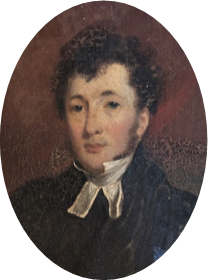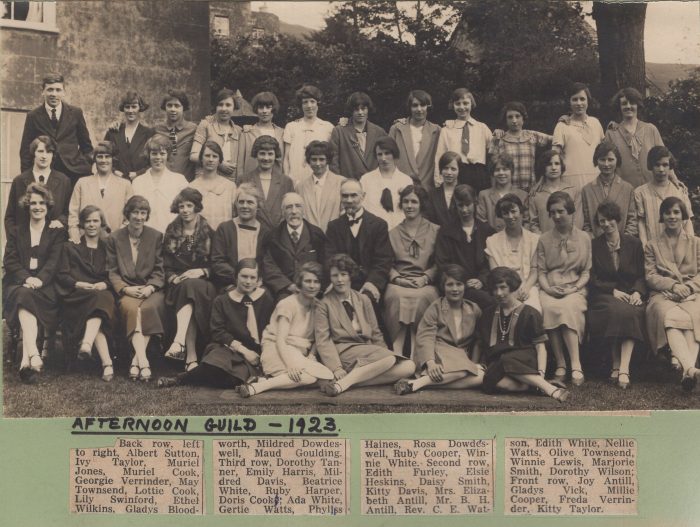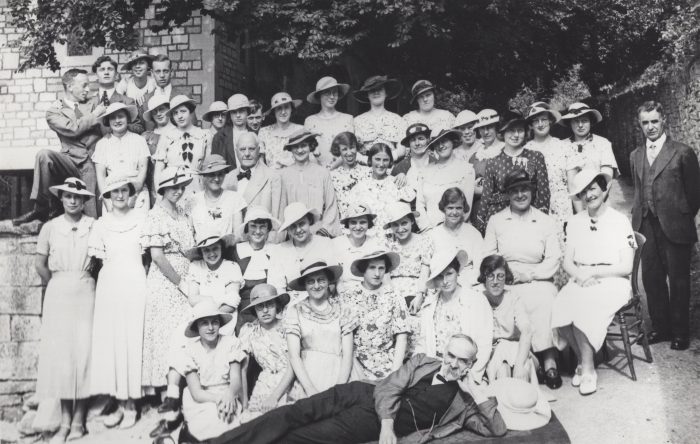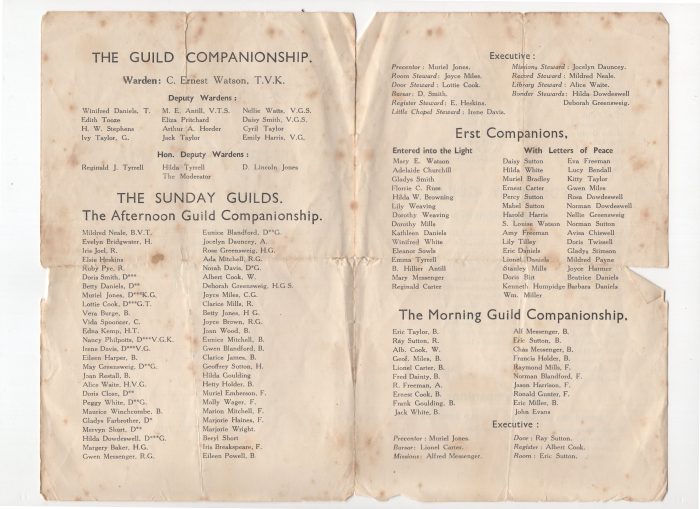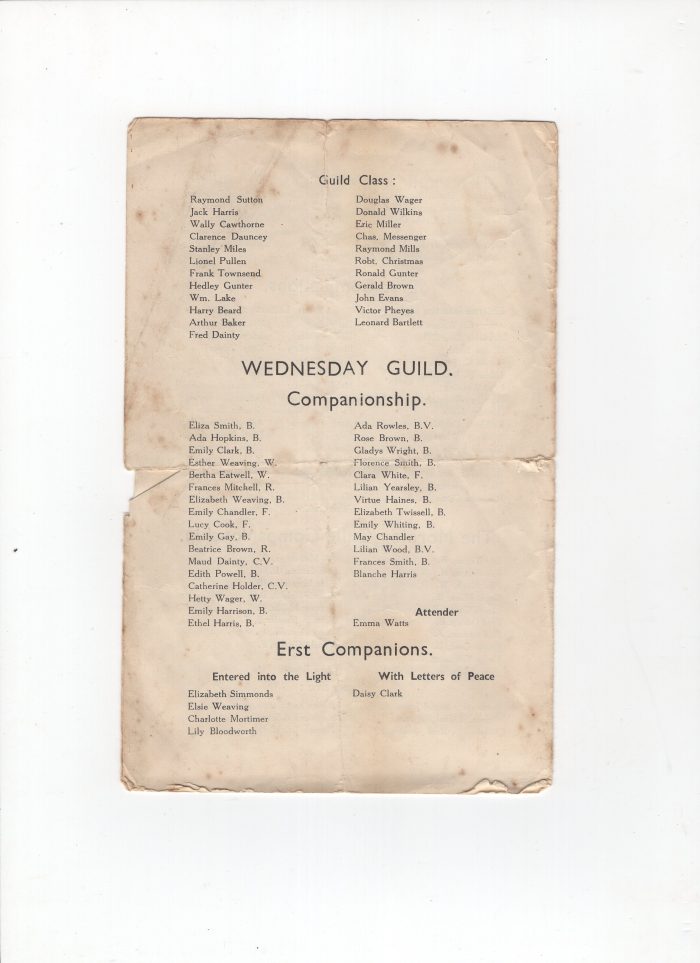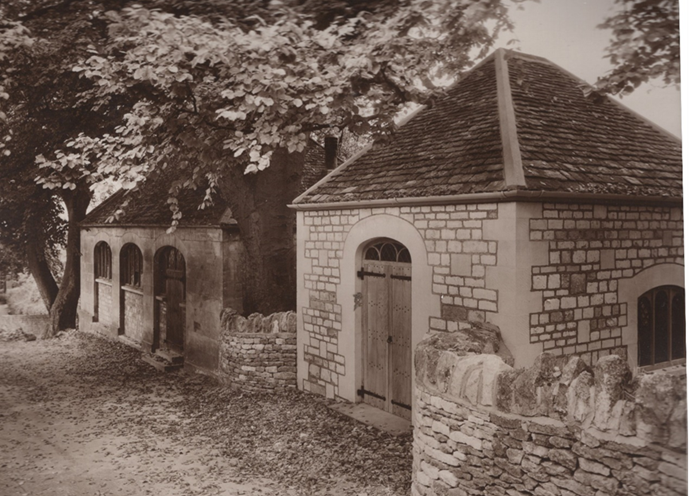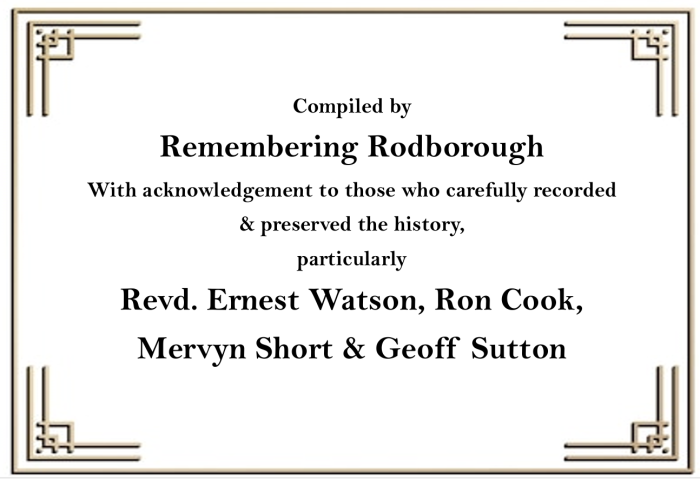The Little Chapel is a conversion, in Arts & Crafts style dating from 1925, of the former Rodborough Tabernacle Coach House. The building is regularly open and used for services. and is part of the Small Pilgrim Places network
The Coach House
The coach house and stables below were built in 1836 as part of an extensive enlargement of the church, replacing a smaller coach house to the west of the main building. Nathaniel Samuel Marling J.P. (1797-1861) of Stonehouse Court was a main promoter of the extensions.
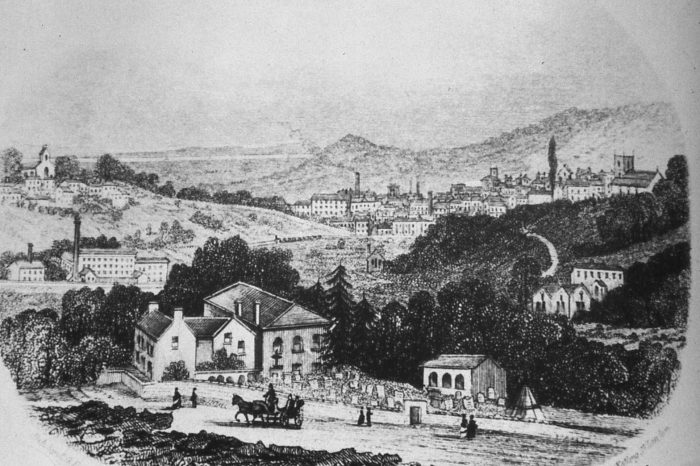
The 1836 coach house is on the right.
The picture is after 1862 as Selsley Church is included.
His wife, Ann died, after a short illness, during the week that chapel extension and new coach house were dedicated. The events were recorded in a letter by Revd. Thomas Binney:
“I was down at Rodborough – The Tabernacle to be opened stands on at midpoint in the midst of the most glorious scenery and commanding a prospect surpassing magnificence. All was beautiful and the people were excited by the brightness of the day, their own members and the prospects and prosperity of the cause.
The wife of the minister, a fine young woman who had been anticipating the day, was unable to leave her room. She heard the company about the door of the Parsonage, and the singing and so on, lamented her disappointment, but thought, as this was on the Wednesday, that she might be better by Sunday.
On the Saturday evening, she died! I had to preach to the people the next day.”
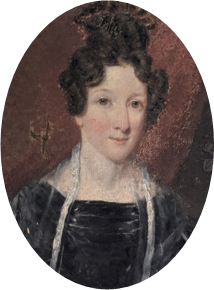
The Scout Hut

By the turn of the 20th century the coach house and stables were no longer in use. The appointment of minister Revd. Charles Ernest Watson was the catalyst for many changes.
In 1909 Rodborough Scout Group was formed and in 1910 the stable was converted to provide a Scout headquarters and gymnasium.
Reginald Tyrell funded further improvements in 1933 when the floor was concreted, the walls panelled, and the gymnasium reequipped.
After 1982 the west entrance was added, and this delightful room remains in use today as the meeting place for Rodborough Scouts Group.
The Young People’s Guild (Tri-Sigma Guild)
& Revd. Charles Ernest Watson

Permission to use the coach house for a young people’s guild was one of the first things requested by the new pastor Revd. Watson in 1909. Subsequently, a basic transformation of the coach house was carried out by the men of the church. Forms were provided, gas laid on and a stove and harmonium installed.
The Tri-Sigma Guild evolved from the youth organisation in 1917.
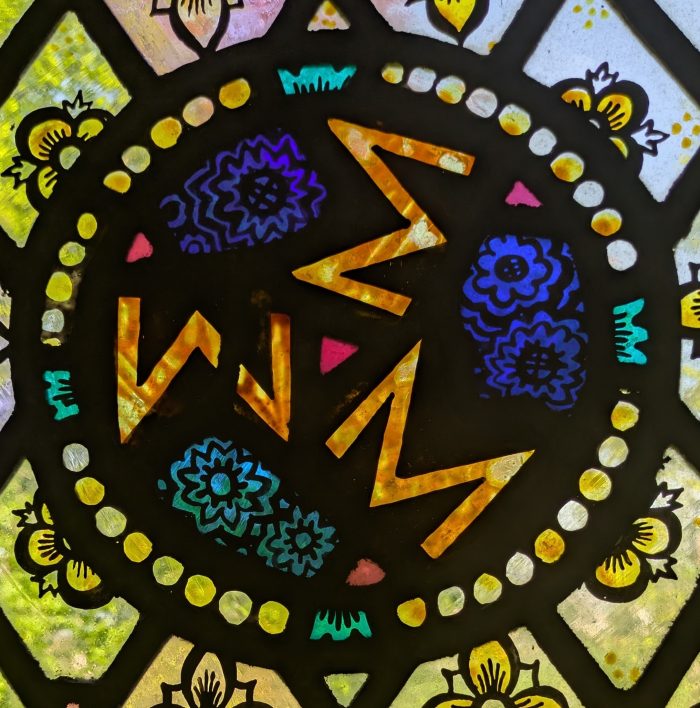
Created by Revd. Watson, the three S’s, seen widely in the chapel, represent Sincerity, Self-Surrender and Service. The Guild had a system of graduation based on solemn promises and shunned gambling, dancing and alcohol. Watson hoped that it would extend beyond Rodborough and produced numerous booklets including “How to start a Guild”.
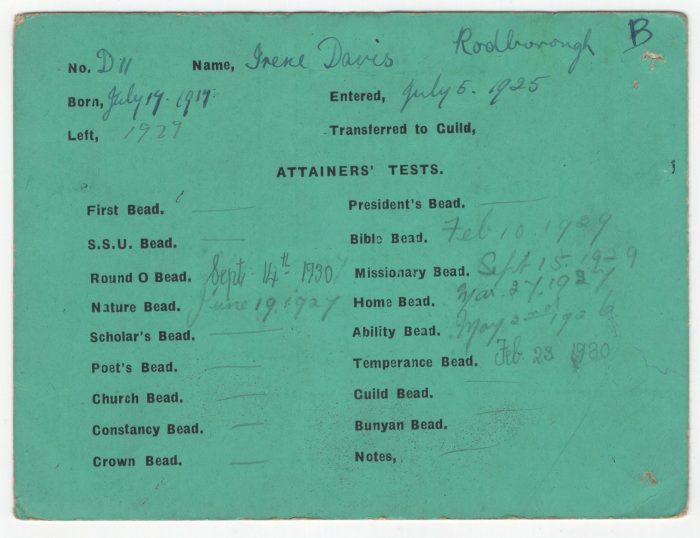
Each stage of the league had a shoulder badge or coloured tassel to which was attached a string of attainment beads. This record card belonged to Irene Connor . “Rene” was a lifelong member of “The Tab”.
The Guilds ended around 1948 having by 1950 evolved into a Youth Club. Mervyn Short (c1989) wrote: “In a rigid post-war era the rigid framework of rules within which the Guilds of the Tri-Sigma worked were already becoming unpalatable .”
Conversion to the Little Chapel 1925
Reginald James Tyrell (1864-1946)
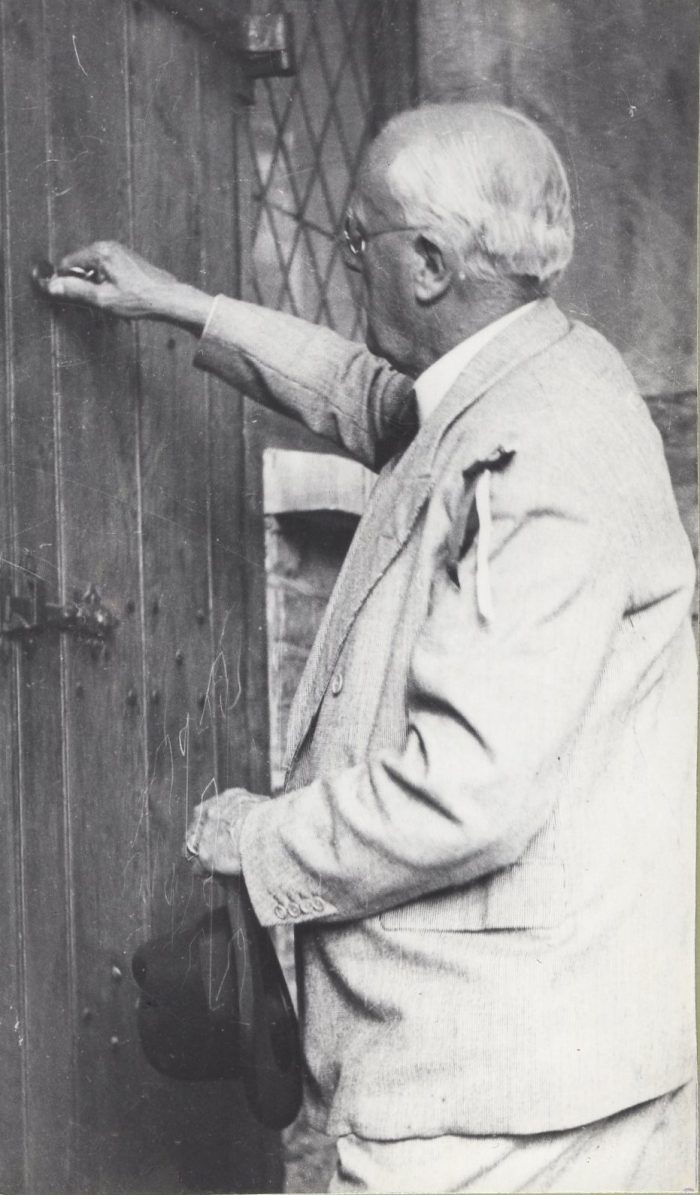
Reginald Tyrell, a wealthy retired businessman, came to live in Rodborough in 1924, latterly at Innsbruck, Walkley Hill. He was a great admirer of Watson’s youth work, and funded an extensive rebuilding scheme with a new roof, converting the old building to The Little Chapel.
In 1936 the chapel was extended adding the entrance vestibule and the oriel that was in memory of his wife, Emma, who had died the previous year. The nativity widow is dedicated to her.
Mr Tyrell opening the extended chapel in 1936.
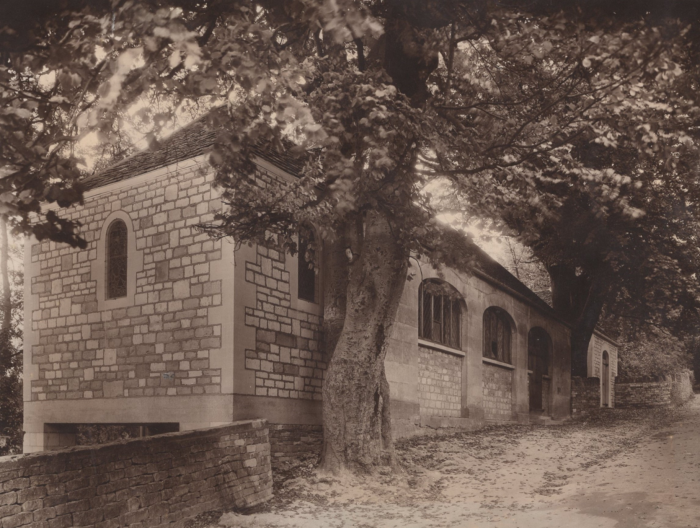
The last trees of Rodborough Wood
The Little Chapel extension in 1936 accommodated two fine beech trees that stood in close proximity. They are said to be the last trees of Rodborough Wood under which George Whitefield preached on his visits in the 18th century.
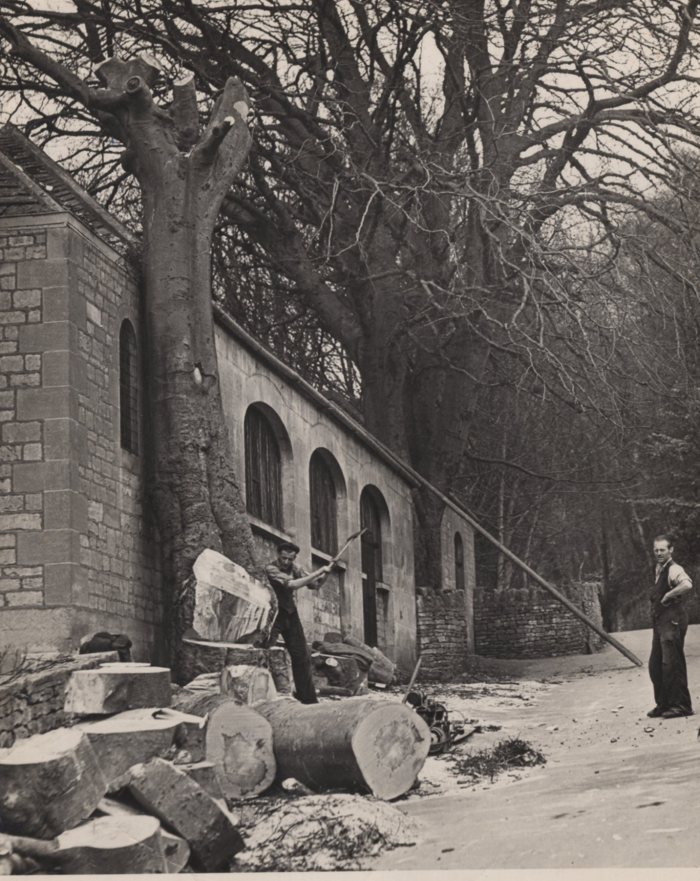
The first beech tree was felled in 1952 after becoming unsafe. A seat made from the wood was placed beside the church.
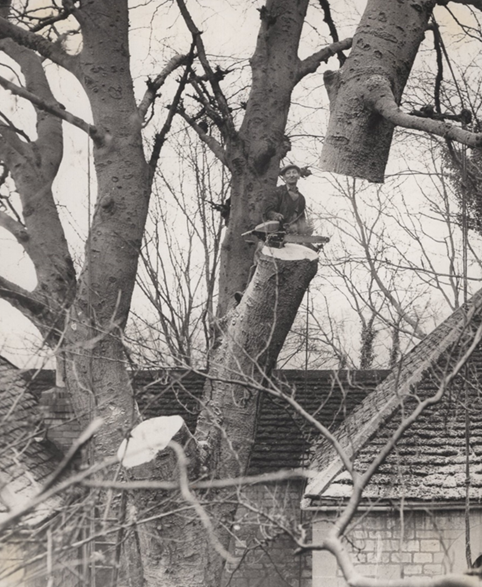
The second tree was felled in 1971 after decay was found. It was removed with two cranes. A seedling was labelled and planted on the bank below the church car park.
The Arts & Crafts Legacy
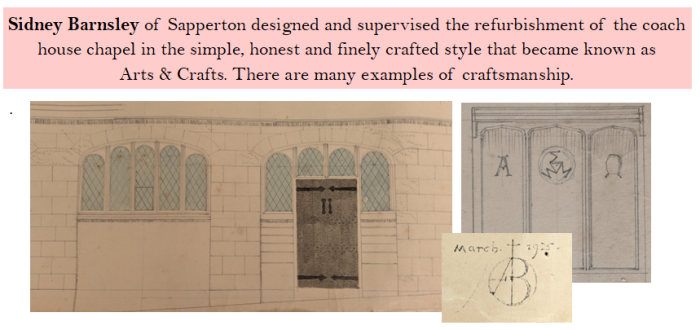
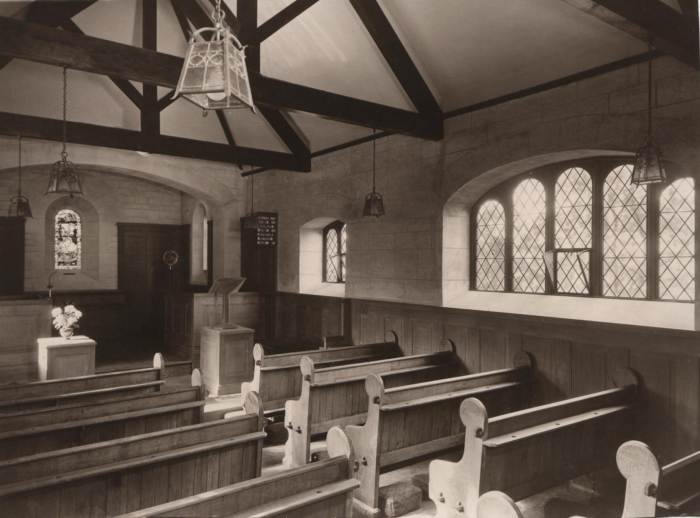
The furniture and fittings were made under the supervision of Peter van der Waals, cabinet maker, at his Chalford workshop.
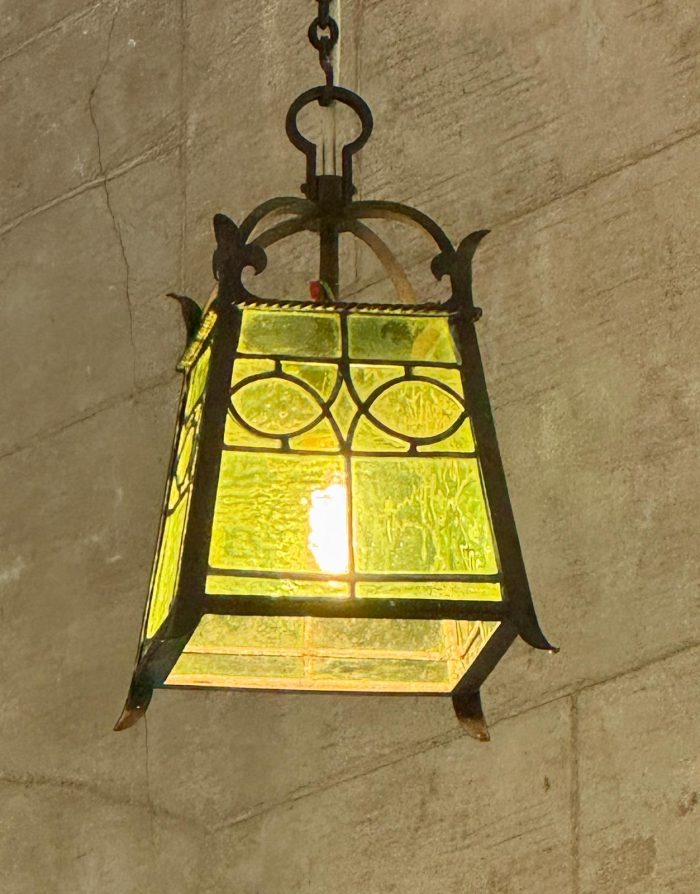
The green glass light pendants are the work of Alfred Bucknell.
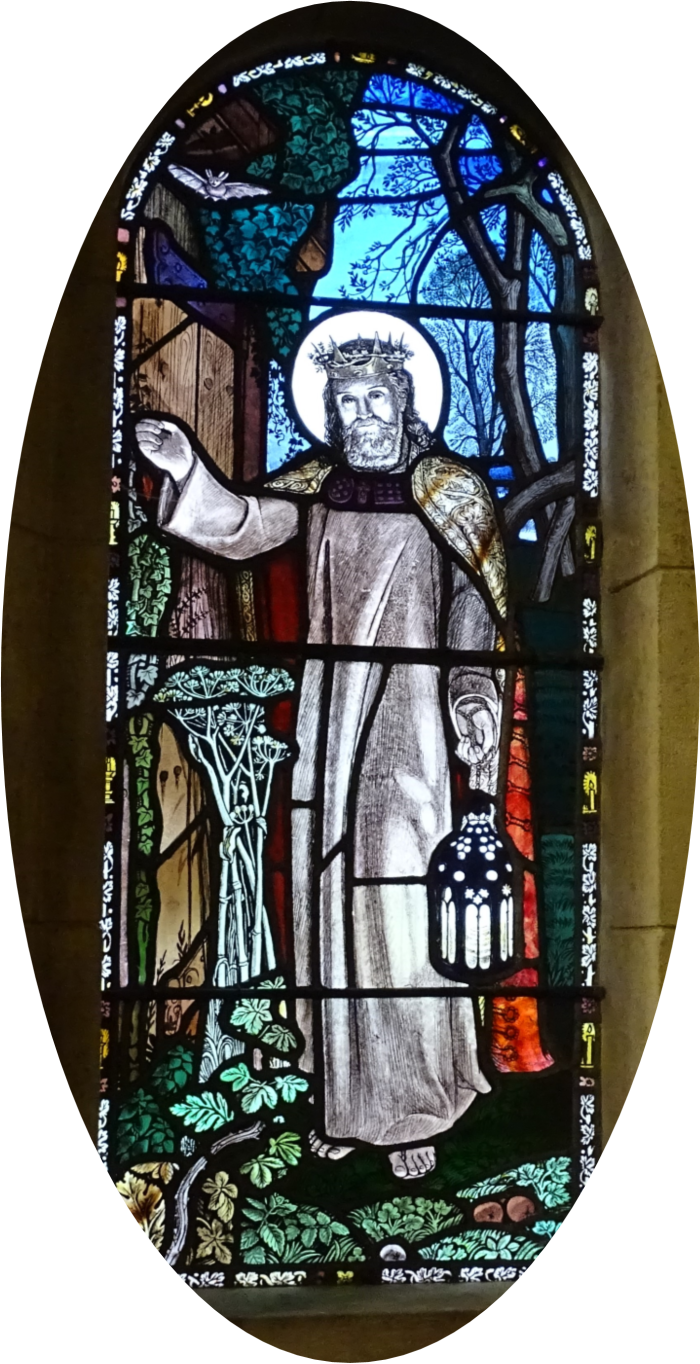
Henry & Edward Payne designed the memorial stained glass windows.
There is more information on the craftspeople and fittings here:
Weddings at The Little Chapel
The Little Chapel was licensed for marriages in 1929. This was the first register entry.
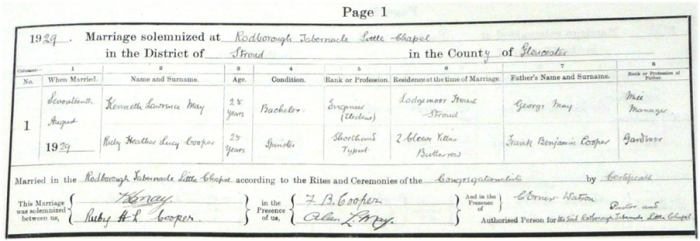
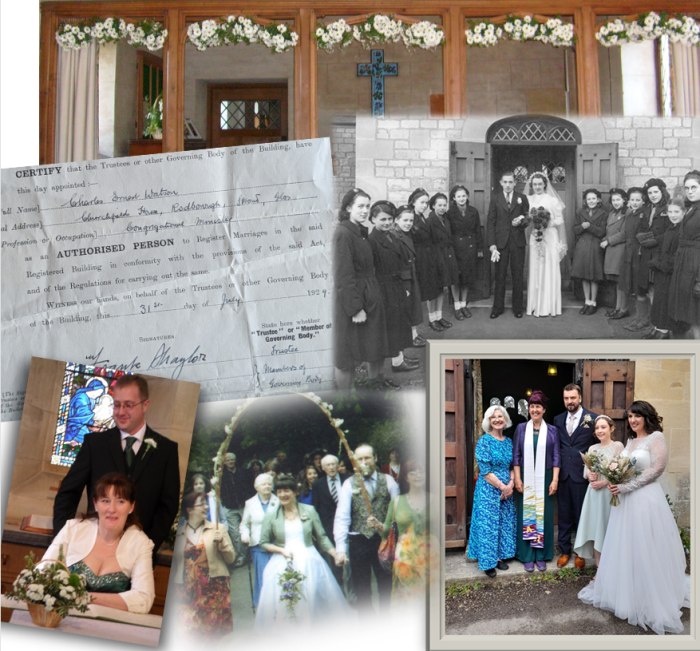
There have been many weddings since and the Little Chapel remains licensed for marriages.

